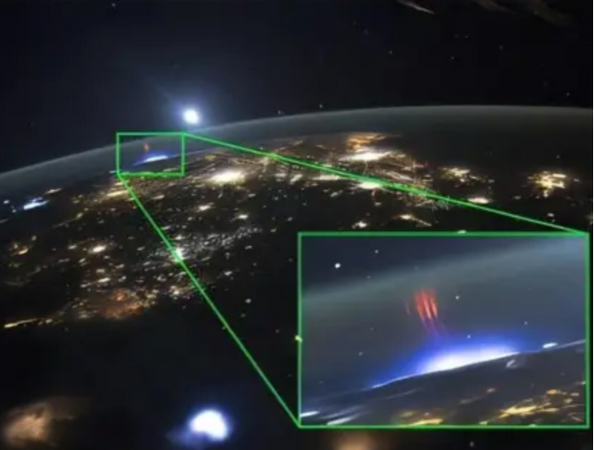NASA astronaut captures rare 'giant jet' shape in space: electrical phenomenon connects clouds to upper atmosphere

NASA astronaut Nichole Ayers captured a rare image from the International Space Station (ISS): a phenomenon known as a "gigantic jet," recorded on July 5 and classified by the agency as an unusual form of TLE (Transient Luminous Event).
As NASA explained in an official statement, this type of electrical discharge represents one of the most powerful manifestations of atmospheric electrical activity , extending from the top of a storm to the upper atmosphere.
These discharges are not easy to observe, as they occur sporadically and are usually seen by chance , often from airplanes or by ground-based cameras that accidentally capture other forms of electrical activity. The space-based recording offers a unique perspective on this phenomenon, which has rarely been documented in such clear detail.

The giant jet stream extended from a thunderstorm up to 100 km high in the atmosphere. Photo: NASA
Giant jet streams occur when turbulent conditions develop at the tops of thunderstorms, allowing lightning to vertically escape from the cloud system and propagate into higher layers of the atmosphere . In this process, an electrical connection is formed between the cloud tops (located at approximately 20 kilometers above sea level) and the upper atmosphere, located at around 100 kilometers above sea level.
This vertical discharge deposits a considerable amount of electrical charge, becoming a kind of column of electricity that passes through several layers of the Earth's atmosphere . Its study contributes to our understanding of how electricity behaves in areas where the atmosphere is thinner and physical conditions change drastically compared to regions closer to the surface.

NASA explained that the event was due to turbulence that allowed the lightning bolt to escape. Photo: istockphoto
Initially, the image captured by Ayers was identified as a sprite , another more commonly observed form of TLE. Sprites, also known as "sprites," are brief, reddish flashes of light that appear high in the mesosphere, around 80 kilometers above Earth.
Unlike giant jets, sprites do not emerge directly from the storm, but are generated independently at a higher altitude, as a result of extremely powerful lightning strikes occurring below . Their shape can vary: they can take on jellyfish-like, plume-like, or carrot-like structures, and can cover areas tens of kilometers in diameter.
Sprites can appear alongside other upper-atmosphere electrical phenomena, also known as TLEs. These include halos and ELVEs , acronyms for Emissions of Light and Very Low Frequency Perturbations from Electromagnetic Pulse Sources. These events are part of a broader set of electrical manifestations that, although beyond the reach of ordinary human vision, represent a complex and active dynamic in the upper layers of the Earth's atmosphere.
According to NASA, direct observation of a gigantic jet stream from space allows for progress in understanding these electrical structures that link meteorological phenomena with processes occurring at the edge of space.
Hubble Telescope photographed a strange object traveling through space at record speed The Hubble Space Telescope has captured one of the most detailed images of an object from another star system: Comet 3I/ATLAS. This celestial body represents the third interstellar object identified to date, and its behavior has caught the attention of the scientific community due to the record speed at which it moves through space.
The comet was discovered on July 1, 2025, when it was detected by the ATLAS early warning network telescope, located in Río Hurtado, Chile. This NASA-funded network is designed to locate near-Earth comets and asteroids. Records from observatories such as Palomar in California, which had captured images of the comet since June 14, 2025, were subsequently analyzed. The object was named "3I/ATLAS," where the "I" indicates its interstellar origin.
The Hubble telescope photographed the comet on July 21, 2025, when it was 365 million kilometers from Earth and 446 million kilometers from the Sun.
More news in EL TIEMPO *This content was rewritten with the assistance of artificial intelligence, based on information published by Europa Press, and reviewed by the journalist and an editor.
eltiempo




